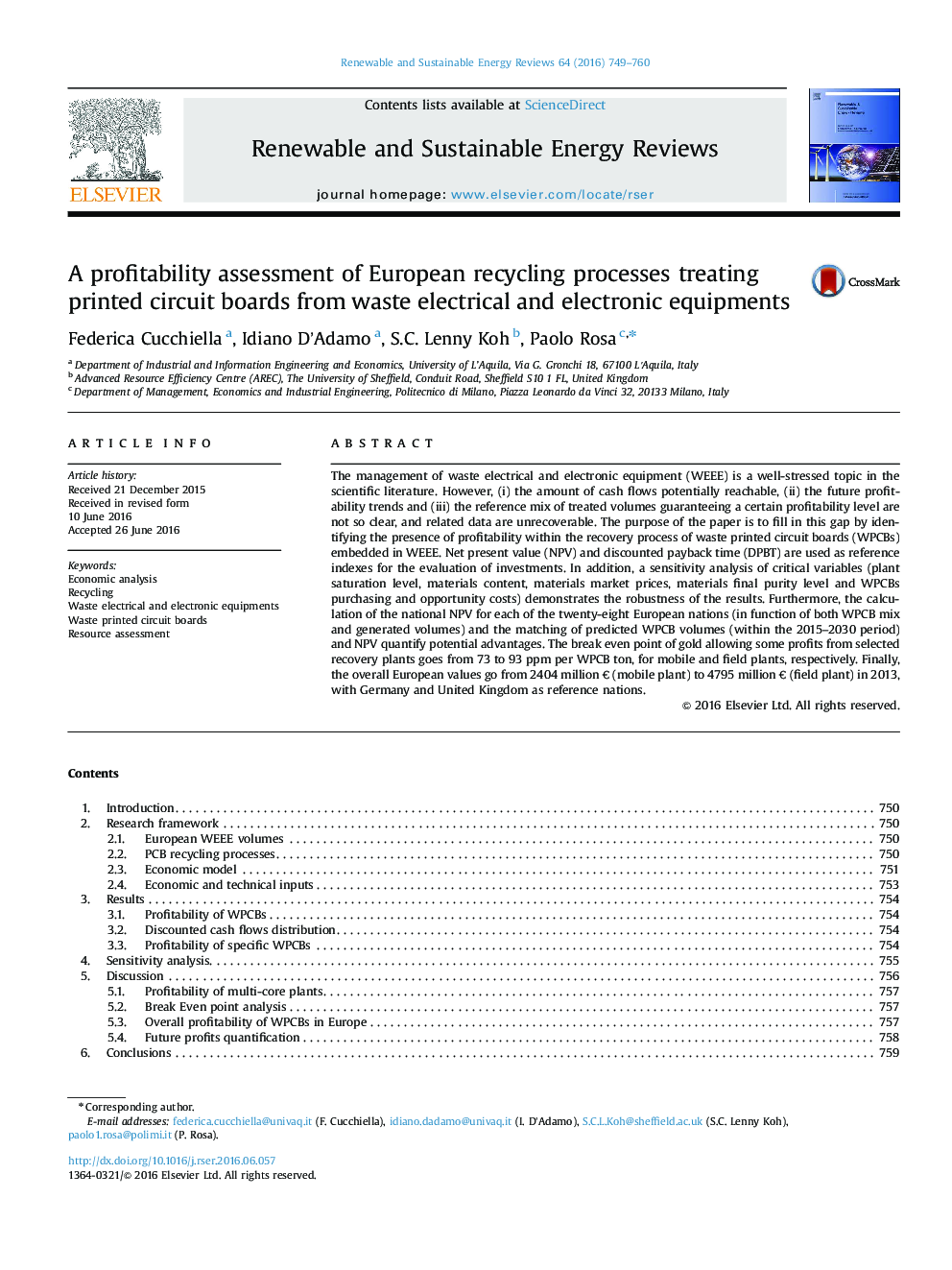| Article ID | Journal | Published Year | Pages | File Type |
|---|---|---|---|---|
| 8113252 | Renewable and Sustainable Energy Reviews | 2016 | 12 Pages |
Abstract
The management of waste electrical and electronic equipment (WEEE) is a well-stressed topic in the scientific literature. However, (i) the amount of cash flows potentially reachable, (ii) the future profitability trends and (iii) the reference mix of treated volumes guaranteeing a certain profitability level are not so clear, and related data are unrecoverable. The purpose of the paper is to fill in this gap by identifying the presence of profitability within the recovery process of waste printed circuit boards (WPCBs) embedded in WEEE. Net present value (NPV) and discounted payback time (DPBT) are used as reference indexes for the evaluation of investments. In addition, a sensitivity analysis of critical variables (plant saturation level, materials content, materials market prices, materials final purity level and WPCBs purchasing and opportunity costs) demonstrates the robustness of the results. Furthermore, the calculation of the national NPV for each of the twenty-eight European nations (in function of both WPCB mix and generated volumes) and the matching of predicted WPCB volumes (within the 2015-2030 period) and NPV quantify potential advantages. The break even point of gold allowing some profits from selected recovery plants goes from 73 to 93 ppm per WPCB ton, for mobile and field plants, respectively. Finally, the overall European values go from 2404 million ⬠(mobile plant) to 4795 million ⬠(field plant) in 2013, with Germany and United Kingdom as reference nations.
Related Topics
Physical Sciences and Engineering
Energy
Renewable Energy, Sustainability and the Environment
Authors
Federica Cucchiella, Idiano D'Adamo, S.C. Lenny Koh, Paolo Rosa,
